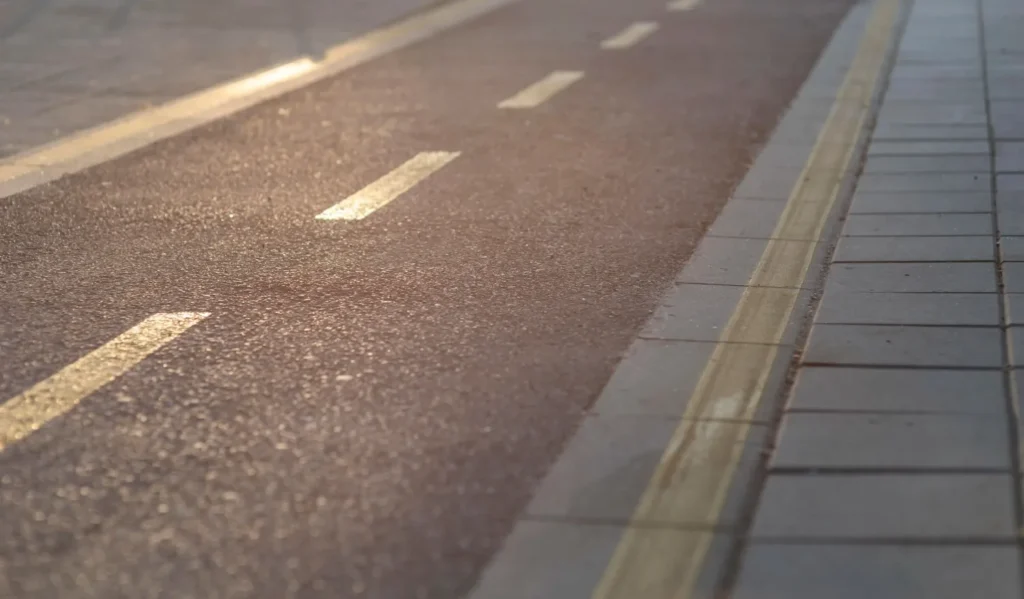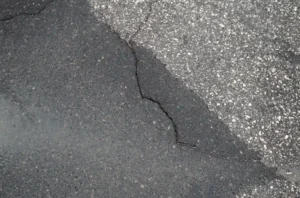A well-maintained parking lot plays a crucial role in the overall impression of your commercial property. When damage becomes too severe for small patches, modern techniques like asphalt repair and asphalt pulverization provide effective, affordable, and eco-friendly solutions. Concrete repair combined with these advanced processes not only restores the look of your lot but also strengthens its durability for years to come. Property managers across Edmonton and Alberta increasingly choose pulverization and stabilization because they cut costs, minimize waste, and deliver long-term results. By reusing existing materials instead of hauling them away, businesses can reduce their environmental footprint while keeping their lots functional and safe. This blend of sustainability and cost efficiency makes concrete repair and pulverization a top choice for proactive commercial property maintenance.

How to Repair an Asphalt Parking Lot?
Repairing an asphalt parking lot begins with a careful evaluation of the damage. Small cracks and holes can often be managed with patching or sealing, while larger structural issues may require more advanced methods. Using professional asphalt repair ensures that underlying problems are identified before they worsen. In many cases, the sub-base beneath the asphalt is still intact, which makes resurfacing or pulverization a cost-effective solution.
This prevents businesses from having to invest in a full replacement while still restoring a safe, durable surface. By acting quickly at the first signs of damage, property managers can extend the lifespan of their parking lots and avoid costly future repairs.
Signs That Indicate Repairs Are Needed
Look out for potholes, spider cracks, and uneven surfaces, as these are early warnings of more severe structural issues. Discoloration caused by oil and chemical spills is another common indicator that the asphalt surface is weakening. Pooling water after rainfall often signals drainage issues that can quickly damage the base layer. Regular inspections help identify these problems early and allow for timely intervention, saving both money and liability concerns. When in doubt, contacting a contractor like ProZone for a professional assessment is the safest way to ensure accurate diagnosis and solutions.
When is Full Replacement Necessary?
Sometimes repairs may not be enough to restore the safety and durability of a lot. If the sub-base is unstable or there is extensive structural damage, a complete replacement may be unavoidable. This involves removing old asphalt entirely, preparing a new foundation, and laying down fresh asphalt. While more expensive, it ensures long-term performance and eliminates recurring issues. Choosing the right approach requires a careful cost-benefit analysis and professional expertise. Full replacement is rare, but it becomes the best solution when the lot poses safety risks or continual maintenance becomes unsustainable.
What is the Process of Pulverizing Asphalt?
Asphalt pulverization is a modern recycling technique that grinds existing asphalt, along with portions of the sub-base, into small reusable pieces. Unlike milling, where material is removed and hauled away, pulverization keeps everything on-site. The crushed material is then spread, leveled, and compacted to form a new, solid base for fresh asphalt layers. This method is especially effective for lots with extensive damage where patchwork would no longer be viable. Pulverization saves on hauling and disposal costs while reducing the need for new aggregate, making it both economical and sustainable. By turning old pavement into a strong foundation, property owners get a structurally sound base that prolongs the life of the final surface.
Key Differences Between Milling and Pulverization
Milling removes only the top layer of asphalt and requires hauling debris off-site, whereas pulverization recycles everything in place. Pulverization addresses deeper structural problems and creates a base that can be immediately stabilized. Because milling is limited to surface issues, pulverization is the preferred option when widespread cracking and potholes are present. This makes it a more comprehensive and long-term solution. Contractors often recommend pulverization for lots that are beyond surface-level damage.
Environmental Advantages of Pulverization
Pulverization is eco-friendly because it drastically reduces construction waste. Since materials are not removed, fewer trucks are needed, which lowers emissions. It also minimizes reliance on new aggregates, conserving natural resources. In addition, pulverization provides an opportunity to fix slopes and drainage problems while recycling old asphalt. For property owners committed to sustainability, this makes it an ideal choice.

How Does Asphalt Repair Work?
Asphalt repair works by restoring damaged areas of pavement while preserving the integrity of the base. Depending on the severity, contractors may use crack sealing, patching, resurfacing, or full-depth reconstruction. When combined with concrete repair for curbs, sidewalks, or adjoining areas, the result is a more durable and uniform surface. Professional repair services ensure that cracks are properly sealed, potholes are filled, and structural damage is addressed before resurfacing. This comprehensive approach helps prevent water infiltration, which is the leading cause of long-term asphalt deterioration. When performed consistently, asphalt repair adds years to the service life of parking lots and reduces overall maintenance costs.
The Role of Stabilization in Asphalt Repair
Stabilization often follows pulverization to create a new, durable surface. Binding agents and tar are mixed with the pulverized asphalt to form a solid, stable base. This method reduces the need for entirely new material and ensures the final surface is as strong as freshly laid asphalt. The process is fast, cost-effective, and delivers a surface capable of withstanding heavy vehicle loads. For property managers, this means a quicker turnaround and less downtime for tenants and customers. It’s one of the most practical ways to achieve long-term results without the expense of complete reconstruction.
Preventing Water Damage During Repairs
Water infiltration is one of the main reasons asphalt deteriorates. Proper sealing and repair techniques are crucial to prevent water from entering cracks and damaging the base layer. Professional contractors use sealants and drainage improvements to address this issue. Preventing water infiltration ensures the repaired lot remains strong and stable for years. Without this step, repairs may fail prematurely and require additional costs.
What are the Methods of Asphalt Repair?
There are several methods of asphalt repair, each suited to different levels of damage. Crack sealing is often the first line of defense, sealing out moisture and preventing cracks from expanding. For localized damage, patching is a simple yet effective option that restores surface integrity. Resurfacing is recommended when damage is widespread but the base remains solid, as it provides a brand-new wear layer at a fraction of the cost of replacement. Pulverization and stabilization are best suited for lots with severe damage, creating a new base without hauling material off-site. The choice of method depends on the severity of the damage, the condition of the sub-base, and budget considerations. Partnering with experts ensures that the right technique is applied for long-term durability and safety.
Crack Sealing and Pothole Patching
Crack sealing prevents small cracks from growing larger by filling them with specialized materials. Pothole patching addresses deeper holes that can damage vehicles and create liability risks. Both methods are quick, affordable, and effective for early-stage problems. They are often used as part of regular Parking Lot Maintenance. When combined, these methods can extend the lifespan of asphalt surfaces considerably.
Resurfacing vs. Full Replacement
Resurfacing is ideal when the sub-base is still in good condition but the surface layer is worn. This adds a fresh wear layer and restores aesthetics while keeping costs low. Full replacement, however, is necessary when the sub-base is unstable or heavily damaged. Contractors determine the best solution based on the extent of deterioration and long-term goals. Choosing the correct method ensures maximum return on investment for property owners.
Conclusion: Invest in Smarter Asphalt Repair
Concrete repair and asphalt pulverization represent the future of cost-effective, eco-friendly pavement maintenance. These methods reduce waste, save money, and create stronger, longer-lasting parking lot surfaces. By choosing advanced techniques like pulverization and stabilization, businesses not only extend the life of their lots but also support environmental sustainability. For property managers in Edmonton, this approach ensures minimal disruption, lower costs, and long-term value. If you want to learn more about these processes or schedule an assessment, reach out to ProZone for trusted expertise. Visit our contact page today to speak with our team and discover how we can help restore and maintain your property’s pavement.
For additional background on the concept of asphalt concrete, check out this external resource that explains its history and applications.
